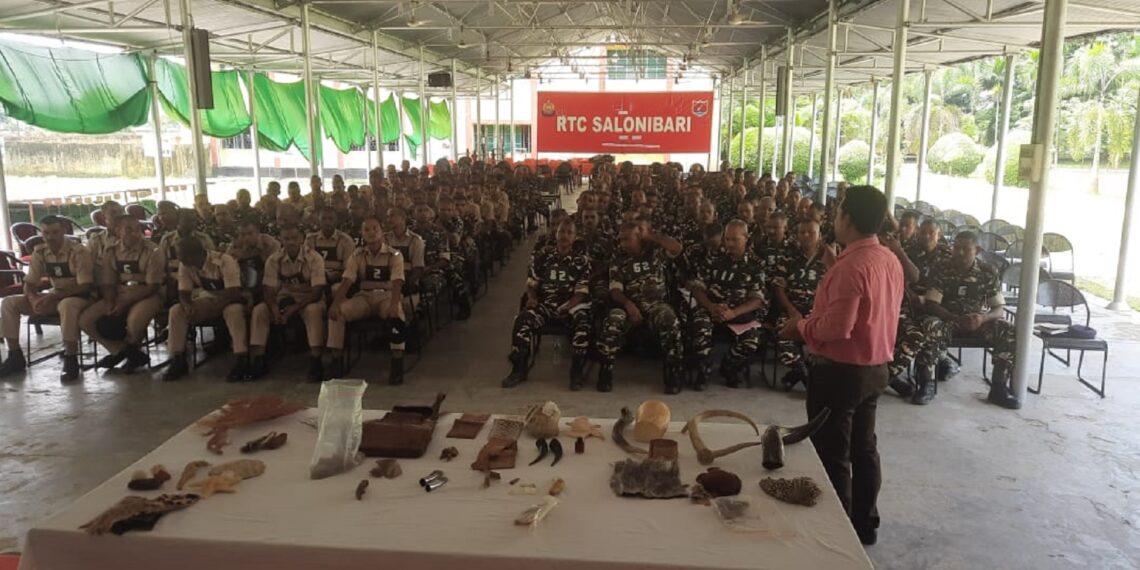GUWAHATI: In bid to quell the surge of wildlife crimes in the Northeast, 99 officials from Sashastra Seema Bal (SSB), India’s elite border guarding force, underwent a sensitisation workshop at the Recruit Training Centre in Salonibari, Tezpur, recently.
The workshop titled “Preventing Wildlife Crime and Illegal Wildlife Trade” saw participations of senior officials and fresh recruits of SSB where they were apprised of the prevalent wildlife crimes and the pivotal role of border guarding forces in counteracting these threats.
Deputy Commandant of the Recruit Training Centre, Vishnu Praveen, inaugurated the event, expressing gratitude to the orgainsers – the Wildlife Crime Control Bureau (WCCB) and Aaranyak, a leading biodiversity conservation organisation. This collaboration came into play upon an invitation from the SSB.
Jawaharlal Baro, Assistant Director at WCCB, delved deep into the Wildlife (Protection) Act of India, 1972, highlighting its 2022 amendment. He also educated the attendees about various trafficked wildlife species and products prevalent in the Northeast. Furthermore, a hands-on session demonstrating the identification of frequently seized wildlife products in the region was conducted.
From Aaranyak, Dr Jimmy Borah, Senior Manager, and Ivy Farheen Hussain, Project Officer and Wildlife Crime Analyst, painted a broader picture, discussing wildlife crimes from local to global perspectives. Their conversation centred around the Indo-Bhutan landscape, elaborating on tactics employed by smugglers and preventive measures that can be adopted. The links between wildlife crime, drug trafficking, and arms smuggling were also highlighted. The session was punctuated with active discussions and a Q&A session.
“The participants were keen on understanding the multifaceted aspects of wildlife crime, and their queries were thoroughly addressed by our team,” shared Borah.
This year alone, six such workshops have been conducted with the SSB. The ongoing efforts by Aaranyak in these sensitisation workshops are backed by the US Fish and Wildlife Service.















